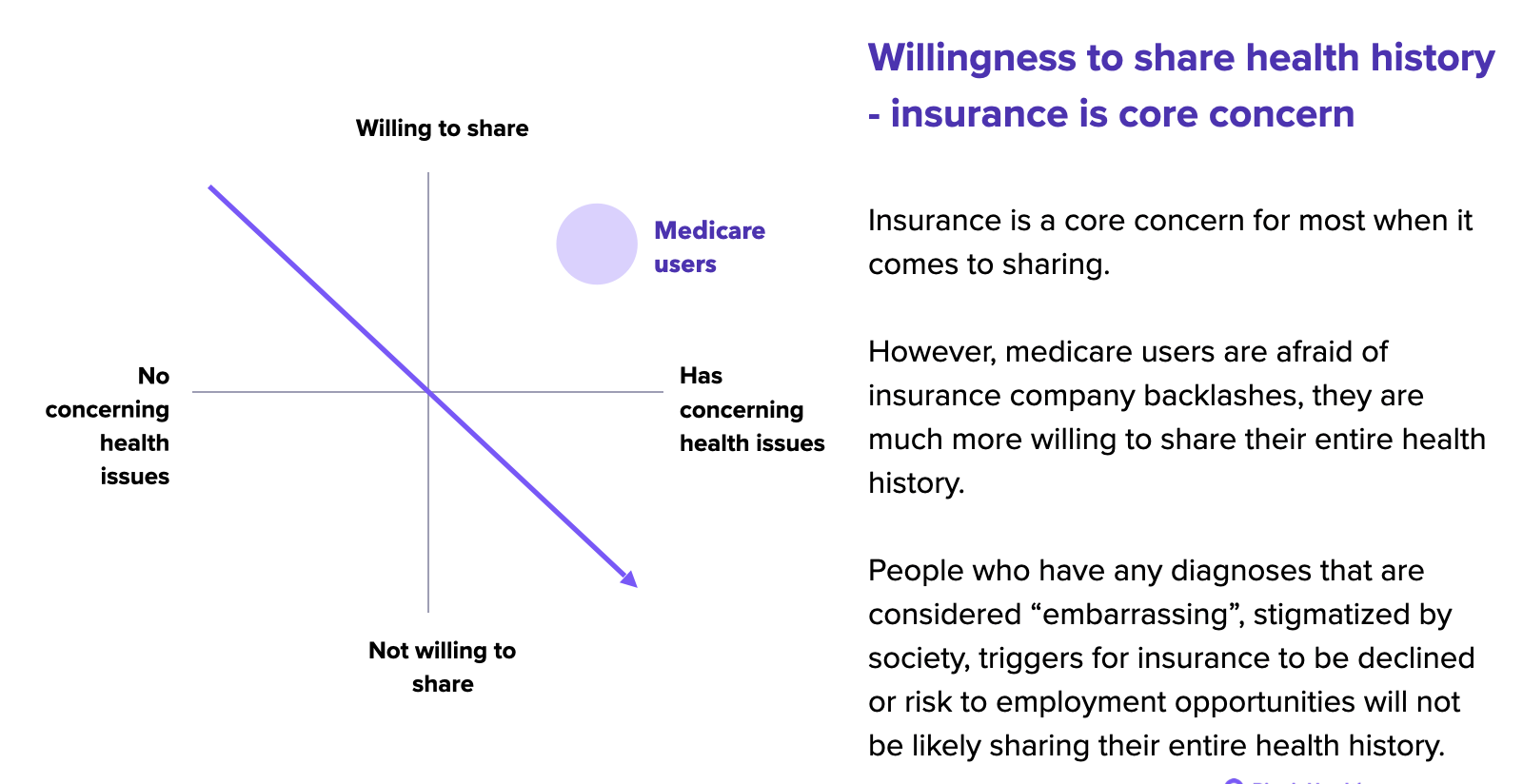Picnichealth - enhancing value propositionS to unlock drive growth
Background
PicnicHealth is a startup that collects and analyzes patient health records. A patient is able to provide PicnicHealth with their healthcare history and provider information, and Picnic collects, processes and digitizes their entire past with the patient’s consent. The patient then has access to their digital health history. On the business side, PicnicHealth can then access patient-level data and create usable data sets - providing insights into different disease types that can be leveraged by research institutions and companies developing therapeutics.
In an effort to unlock and speed up patient acquisition efforts, I helped to lead a work-stream to uncover ways to enhance the PicnicHealth value prop to patients beyond the digitization of their health history.
Previous iterations of PicnicHealth’s landing pages with a records-first value prop
PROCESS
Partnering with company executives and cross-functional partners and an external team I assembled, we established an efficient discovery process to quickly glean insights into how we might enhance the value prop. Those discovery steps included:
Existing patient inquiry - We spoke with existing PicnicHealth members who were actively engaged and not engaged with the service. We learned that some specific patients appreciated having their digital health history, such as MS patients who often see multiple healthcare providers, while others didn’t quite understand the value and felt as though their risking the personal data.
In both groups, neither engaged/not engaged patient type seemed to understand that their data may be used for research. While some expressed concern, many liked the idea of their data potentially helping to advance treatment for their disease - a key guiding insight that we decided to further explore.
Literature review - Extensive existing research about health data security and privacy concerns highlighted some of the potential headwinds for Picnic. Research showed collective unease around sharing health history because of lack of control, misaligned values, anonymity, and caution due to health insurers.
Qualitative interviews - We conducted two rounds of interviews with 11 participants who had rare diseases. Through the conversations, 3 key needs emerged as themes for patients.
Searching for answers - Patients are constantly looking for resources, news, and insights into their disease and potential treatments. It’s difficult to find authoritative information.
Feeling isolated - Having a rare disease type can feel isolating. Patients often long for people to connect with who can understand what they’re going through and can empathize with.
Difficulty finding a specialist - Many patients with rare diseases do not live close or have access to a medical professional with deep expertise on their condition
Concept development - Understanding the findings from the interviews, we developed and tested conceptual offerings and tested them with another group of patients in interviews. One direction tested simplified concepts around the messaging of Picnic, removing the patient health record value prop and being straight forward about asking for health data. The second direction tested enhancing the offerings to solve the search for answers, isolation, and access to expert opportunities uncovered.
Synthesis - From both directions, we were able to glean a variety of key insights to how patients interpret the messaging. From social proofing to building authority with logos, there were a few aspects that patients found to help build the legitimacy they were seeking.
In the second direction of concepts, widening the offering to include access to resources, a community, and experts was well received broadly, indicting to the team that these veins could be worth further exploration as a business offering.
Results
With the research findings and synthesis concluded, we bucketed next steps into three distinct areas:
Immediate wins: Website copy, CTAs, emails, and the like were audited and refined to reflect insights and more in-tune messaging from the study
Acquisition testing: We took disease specific insights and launched verticalized disease specific acquisition efforts, testing ad units, direct outreach and unique disease-specific landing pages - increasing patient conversion
Enhanced future features - The team put further discovery efforts on the roadmap - assessing feasibility and level of investment, specifically for connecting patients with specialists through a consultation, fundamentally shifting how the company thought about providing value to patients






